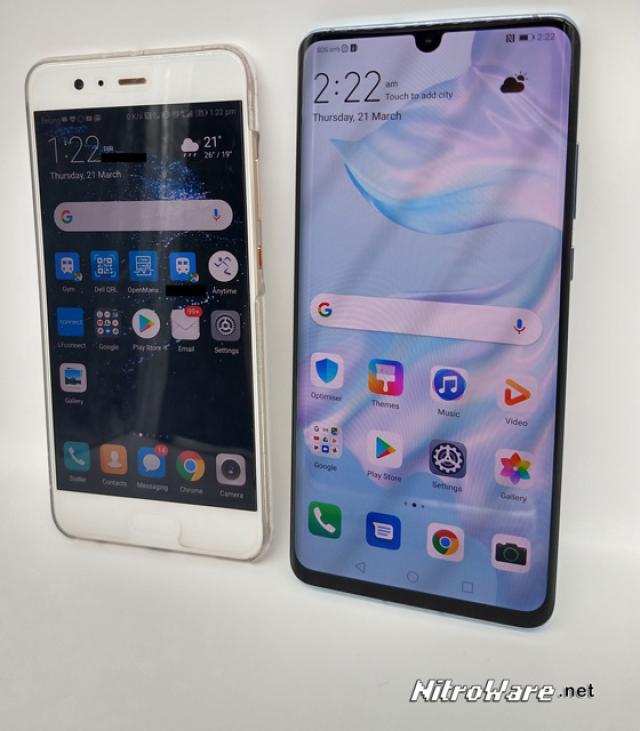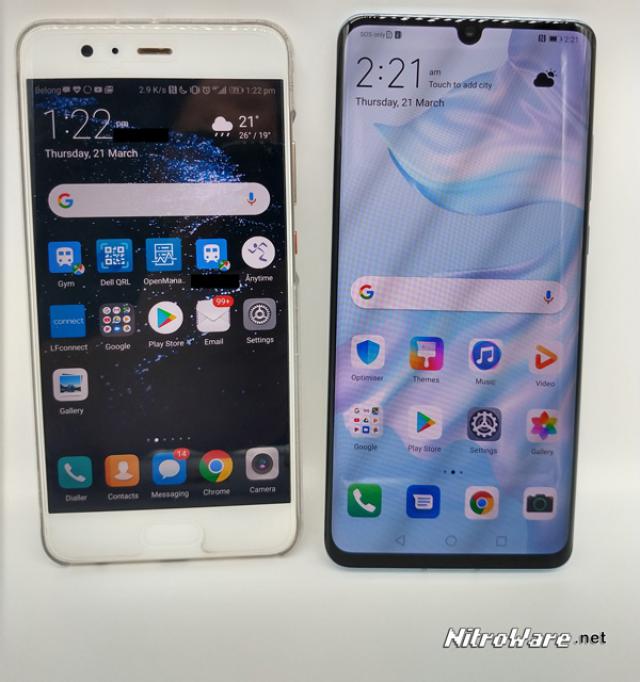Display
P30 follows the Premium form factor route of late offering a 6 and 6.5” device in a taller form factor
|
Handset |
Screen Size (Inch) |
Screen Resolution |
Screen Aspect Ratio |
Screen Pixel Density (Pixels Per Inch) |
|
Huawei P30 Pro |
6.4” |
1080 x 2340 |
19.5:9 |
388 ppi |
|
Huawei P30 |
6.1” |
1080 x 2340 |
19.5:9 |
422 ppi |
|
Samsung S10+ |
6.4” |
1440 x 3040 |
19:9 |
522 ppi |
|
Samsung S10 |
6.1” |
1440 x 3040 |
19:9 |
550 ppi |
|
Samsung S10e |
5.8” |
1080 x 2280 |
19:9 |
438 ppi |
|
Huawei P20 Pro |
6.1” |
1080 x 2240 |
18.7:9 |
408 ppi |
|
Huawei P10 Plus |
5.5” |
1440 x 2560 |
16:9 |
540 ppi |
|
Moto G6 Plus |
5.9” |
1080 x 2160 |
18:9 |
409 ppi |
Moto offers the now ‘classic’ taller aspect ratio of 18:9 or 2:1, meaning the screen is twice wide as it is high. Wider than standard 16:9 HDTV but not quite 21:9 Cinemascope or higher (2.35:1 or more)
Think of an ultra-wide display as a standard HD display with sides attached, making it wider. Noticed that when you go to the movies that the curtains on the sides of the screen retract to reveal more of the screen? That is the same as we are discussing here
When I say wider here, this is interchangeable with taller, as the phones dimensions are swapped based on if it held in its landscape or portrait orientation.
Huawei went just a touch taller with the P20 Plus as did Samsung with the entry S10e. The P30 series goes taller again and can consider the G6Plus, P20 pro, S10e and both P30s as somewhat equivalent in screen resolution (but not pixel density – that is another matter as shown in our table)
However, given they are flagship devices Samsung went with Wide Quad HD resolution instead of Wide Full HD whereas Huawei did not with both the P20 Pro and p30Pro.
Note that Samsung S10’s default resolution is Full HD+ and can be changed to Quad HD+ in Settings. This is likely for battery life but my gripe here is how many will know they can change the setting.
Phone makers need to balance the shape of the phone with the display that can possibility used. A phone that is too wide or too tall would be uncomfortable to use as well as complicate how photos and video are displayed. These attempts are shown in our table with the variances between devices.
In my opinion, P20/P30 should have received a wide QHD screen just like the Samsung, which would be a step up from the P10
Jeez, make up your minds Huawei,
Thanks to their screens, the Samsung S10/+ have the highest density of pixels of this bunch, which means text and graphics will be displayed sharper as the pixels are closer to each other. The larger the screen for a given resolution, the worse the pixel density and the more coarse the pixel density
If it is worse then why do this? This is typically done to make the text and graphics easier to read as they will be larger with a coarser pixel density and a larger screen. However, some tricks are done in software to compensate for this, which is called scaling but generally the better the ppi (or dpi) the better, the image.

